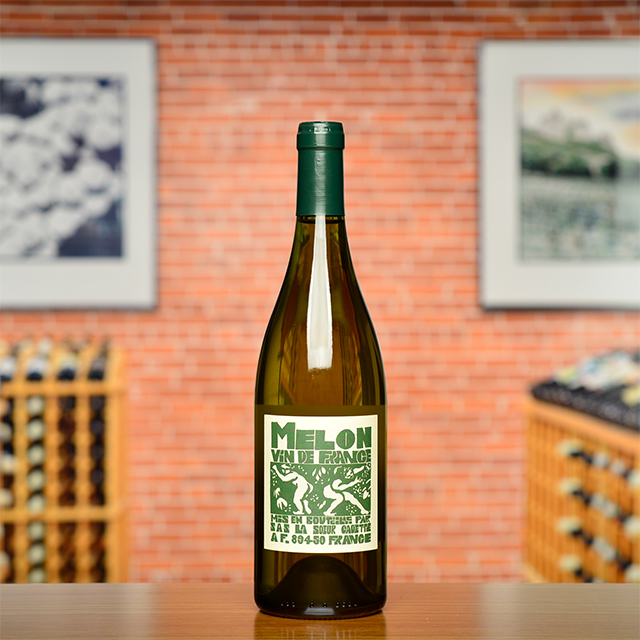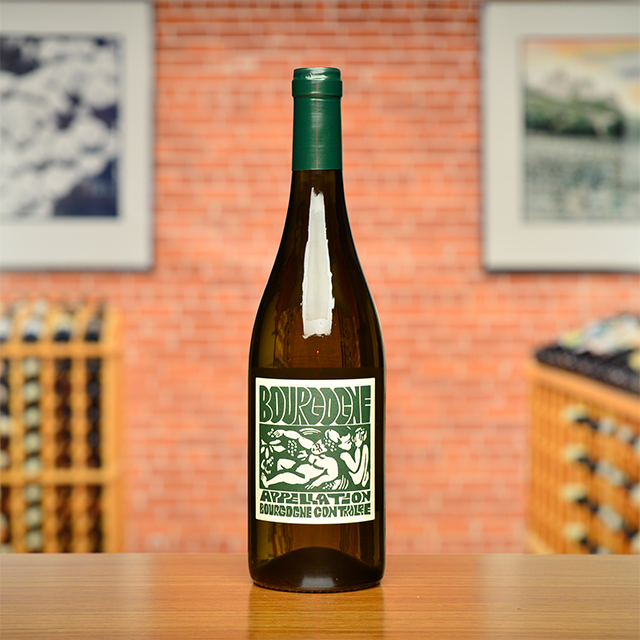Notify me
2018 Vézelay Blanc “La Châtelaine”
Domaine de la Cadette
In the pages of this newsletter back in 2007 (and later reprinted in his book A Really Big Lunch), Jim Harrison describes a “nasty summer in Montana” during which a heat wave made it impossible to enjoy his typical red wine favorites. A short list of whites replaced them—the select few capable of quenching his thirst—and La Cadette’s Vezelay blanc was among them. To current vigneron Valentin Montanet, this celebrated American author’s acknowledgment is more important than Parker’s glowing 2006 Châtelaine rating. “We are very proud that Big Jim had such a good time with la Châtelaine,” he says with characteristic cheekiness. “It is a bottle that fits any need; a sure bet that comforts and brings pleasure after a long day of hard work or a long day doing nothing in particular.” Best to tuck a couple bottles away: in case of heat waves, hard work, or no work at all.
—Emily Spillmann
| Wine Type: | white |
| Vintage: | 2018 |
| Bottle Size: | 750mL |
| Blend: | Chardonnay |
| Appellation: | Vézelay |
| Country: | France |
| Region: | Burgundy |
| Producer: | Domaine de la Cadette |
| Winemaker: | Valentin Montanet |
| Vineyard: | 25 years, 13.5 ha |
| Soil: | Clay, Limestone |
| Aging: | Wine is aged for 7 to 10 months in stainless steel before bottling |
| Farming: | Organic (certified) |
| Alcohol: | 12.5% |
More from this Producer or Region

2023 Vin de France Blanc Melon de Bourgogne
France | Burgundy
The grape is better known as the Loire Valley’s delicate, citrusy Muscadet, but grown in the land from whence it’s named, it takes on lovely length and texture.

2022 Pommard 1er Cru “Les Fremiers”
Domaine Lucien Boillot et Fils
France | Burgundy
Les Fremiers has a vivid magenta color, abundant cherry and raspberry fruit, an exotic spice note, and subtle oak.

2023 Givry Rouge 1er Cru “Clos du Cras Long”
France | Burgundy
With notes of cherries, blood orange, and spice, this will go beautifully with your next bœuf bourguignon or coq au vin.

2023 Vézelay Blanc “La Châtelaine”
France | Burgundy
La Châtelaine highlights what may be the best terroir of Vézelay and why this little appellation is on the map in the first place.

2023 Chablis 1er Cru “Vaillons”
France | Burgundy
An element of luscious, tender fruit that seems to coat the wine’s spinal chord of Kimmeridgian minerals.

2018 Charmes Chambertin Grand Cru
France | Burgundy
A classic Charmes, sensual and graceful, with a deep core of concentration.

2023 Bourgogne Blanc
France | Burgundy
A thirst-quenching, spirit-lifting, and downright delicious white Burgundy.

2023 Puligny-Montrachet 1er Cru “Sous le Puits”
France | Burgundy
Larue’s white Burgundies possess purity, energy, and invariable minerality.

2023 Vézelay “La Piècette”
France | Burgundy
It has all the best of Vézelay: a fresh, floral, citrusy attack, followed by warm and textured charm.

2023 Bourgogne Rouge
France | Burgundy
A spot of Pinot from Volnay, a dollop from Mercurey, a pinch from Vézelay, keep the clusters whole, and voilà! A nourishing, expressive, everyday rouge that really sings.
About The Producer
Domaine de la Cadette
About The Region
Burgundy

In eastern central France, Burgundy is nestled between the wine regions of Champagne to the north, the Jura to the east, the Loire to the west, and the Rhône to the south. This is the terroir par excellence for producing world-class Pinot Noir and Chardonnay.
The southeast-facing hillside between Dijon in the north and Maranges in the south is known as the Côte d’Or or “golden slope.” The Côte d’Or comprises two main sections, both composed of limestone and clay soils: the Côte de Nuits in the northern sector, and the Côte de Beaune in the south. Both areas produce magnificent whites and reds, although the Côte de Beaune produces more white wine and the Côte de Nuits more red.
Chablis is Burgundy’s northern outpost, known for its flinty and age-worthy Chardonnays planted in Kimmeridgian limestone on an ancient seabed. Vézelay is a smaller area south of Chablis with similar qualities, although the limestone there is not Kimmeridgian.
To the south of the Côte de Beaune, the Côte Chalonnaise extends from Chagny on its northern end, down past Chalon-sur-Saône and encompasses the appellations of Bouzeron in the north, followed by Rully, Mercurey, Givry, and Montagny.
Directly south of the Chalonnaise begins the Côte Mâconnais, which extends south past Mâcon to the hamlets of Fuissé, Vinzelles, Chaintré, and Saint-Véran. The Mâconnais is prime Chardonnay country and contains an incredible diversity of soils.
More from Burgundy or France
2022 Saint-Romain Blanc
Domaine Taupenot-Merme France | Burgundy
2022 Clos de Vougeot Grand Cru
Domaine Méo-Camuzet France | Burgundy
2023 Saint-Aubin Rouge 1er Cru “Sur Le Sentier du Clou”
Domaine Larue France | Burgundy
2023 Saint-Aubin 1er Cru “Sous Roche Dumay”
Domaine Larue France | Burgundy
2022 Bourgogne Passetoutgrain
Domaine Robert Chevillon France | Burgundy
2023 Aloxe-Corton 1er Cru “Les Vercots”
Domaine Follin-Arbelet France | Burgundy
2022 Gevrey-Chambertin
René Bouvier France | Burgundy
2022 Irancy
Benoît Cantin France | Burgundy
2023 Bourgogne Pinot Noir
René Bouvier France | Burgundy
2007 Vosne-Romanée 1er Cru “Aux Brûlées”
Domaine Méo-Camuzet France | Burgundy
2022 Fixin
René Bouvier France | Burgundy
2023 Bourgogne Epineuil
Domaine Savary France | Burgundy
2022 Saint-Romain Blanc
Domaine Taupenot-Merme France | Burgundy
2022 Clos de Vougeot Grand Cru
Domaine Méo-Camuzet France | Burgundy
2023 Saint-Aubin Rouge 1er Cru “Sur Le Sentier du Clou”
Domaine Larue France | Burgundy
2023 Saint-Aubin 1er Cru “Sous Roche Dumay”
Domaine Larue France | Burgundy
2022 Bourgogne Passetoutgrain
Domaine Robert Chevillon France | Burgundy
2023 Aloxe-Corton 1er Cru “Les Vercots”
Domaine Follin-Arbelet France | Burgundy
2022 Gevrey-Chambertin
René Bouvier France | Burgundy
2022 Irancy
Benoît Cantin France | Burgundy
2023 Bourgogne Pinot Noir
René Bouvier France | Burgundy
2007 Vosne-Romanée 1er Cru “Aux Brûlées”
Domaine Méo-Camuzet France | Burgundy
2022 Fixin
René Bouvier France | Burgundy
2023 Bourgogne Epineuil
Domaine Savary France | Burgundy
Kermit once said...

Kermit once said...
You don’t have to be rich to cellar a great wine.
















